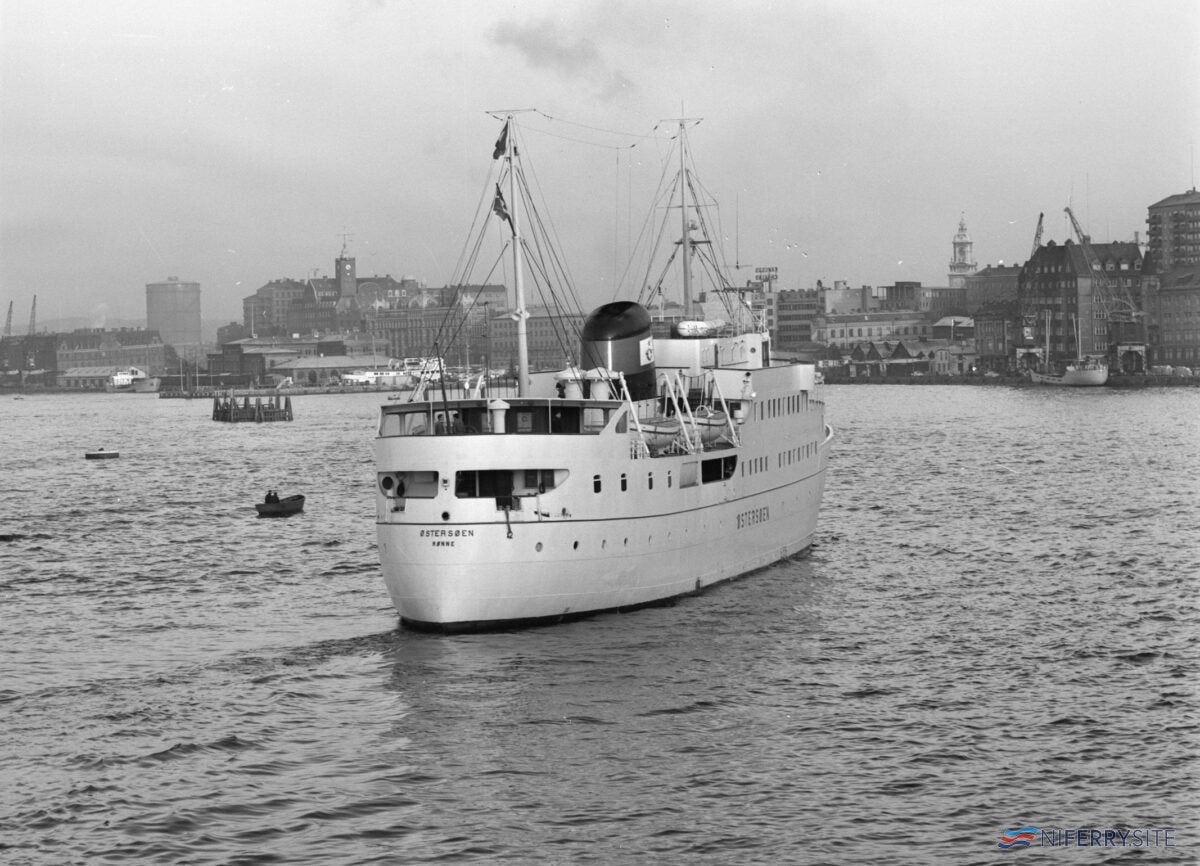Family-owned ferry company Stena Line is celebrating 60 years of ferry operations this week. On 28 September 1962, the chartered ferry ØSTERSØEN made her maiden voyage for a Danish company known as Skagen – Gothenburg Linien AS between Gothenburg (Sweden) and Skagen (Denmark). This was the precursor to what is now known as Stena Line.
Shopping Trips
The initial business idea was a simple one. Many passengers on the existing services between Sweden and Denmark were undertaking shopping trips as prices in Denmark were lower and customs allowances generous. A Danish businessman called Poul Ludvigsen realised that if he chartered a car ferry he could sell food, alcohol, and tobacco from stalls on the car deck and not only make money from the fare but also from the goods sold onboard.

Skagen – Gothenburg Linien AS quickly ran into financial difficulties, however. These were so extreme that the company couldn’t afford to pay the charter fee for ØSTERSØEN and so the vessel returned to her owner.
On 14 December 1962, Ludvigsen met with a fairly well known scrap dealer and shipowner named Sten Allan Olsson looking for investment in his idea. Instead, Olsson agreed a charter for ØSTERSØEN the following day and established a new Swedish company named Skagenlinjen to run the service. Poul Ludvigsen was retained as a consultant and looked after purchasing and advertising for the new venture.
A New Identity
In the years that followed there was rapid expansion, not just in the routes that were offered but also in the number of vessels acquired (and sold). In 1963 the famous Stena funnel colours first appeared, designed in collaboration with Danish designer Knud E. Hansen. The same year Skagenlinjen also ordered its first purpose-built ferries, POSEIDON and AFRODITE.
1963 was also the year the Gothenburg – Frederikshavn route was established. This was partially by accident as the modern West German car ferries Skagenlinjen had chartered were too big to fit into Skagen during poor weather and so they diverted to Frederikshavn instead. It wasn’t long before Skagenlinjen realised that this meant there was potential to use even bigger ships at Frederikshavn and so in October the route became permanent.

New ships continued to be ordered throughout the 1960’s and new routes were tried, some more successful than others. In 1965, two brand-new car ferries were delivered from a French shipyard. The first, STENA DANICA, was the first ship to carry the “Stena” prefix and was inserted onto the busy Gothenburg – Frederikshavn route. The second, STENA NORDICA, would start a new route between Tilbury and Calais before being chartered out to the Caledonian Steam Packet company for use on the Stranraer to Larne route. This would be the first of many Stena Line vessels which would be chartered out to other operators. Ahead of the start of the new Gothenburg – Kiel route in 1966 the various Sten A. Olssen passenger services, which had been marketed under a variety of names, were rebranded Stena Line.
Expansion and growth
Over the years many new routes were tried, some of which were successful and others less so. Stena Line didn’t just rely on organic expansion, however. One of the most important takeovers was that of arch rival Sessanlinjen in 1980. This not only eliminated the competitor on Stena’s most important route at the time, but also provided the company with additional tonnage. One of the Sessan ships, KRONPRINSESSAN VICTORIA, is still in service today as STENA EUROPE on the Fishguard – Rosslare route.

Other notable acquisitions include Lion Ferry in 1982 and Stoomvaart Maatschappij Zeeland (SMZ) in 1989. The most significant, however, was the acquisition of Sealink British Ferries in April 1990. By taking over Sealink, Stena doubled its fleet overnight but also inherited a lot of problems. While income at Sealink was good, costs were out of control. The remedy was to cut jobs and one route, but by 1992 the company was profitable. In November 1992 the company was renamed Stena Sealink Line. Four years later, the whole operation was rebranded Stena Line and the Sealink name was no more.

An acquisition that is growing in significance presently was that of five routes from Scandlines in 2012. This gave Stena Line a stronger foothold in the Baltic Sea market, an area that has experienced high growth in recent years.
The Karlskrona – Gdynia route, which was started as a Lion Ferry route in 1995, has seen particularly strong growth in recent years. As a consequence, two almost 240m long ferries are being introduced to the service this year.
Stena Line Today
Today Stena Line operates 38 ships on 18 routes across Northern Europe. The company which started out offering cheap shopping trips to housewives now carries six million passengers and several million tons of freight per year. Throughout the past six decades the company has had to adapt to survive, most recently into a more freight transport focused company following the abolition of duty free shopping within the EU and competition from low cost airlines.
Stena Line also continues to lead with innovation, something that has historically been a key competitive advantage for the company. Its latest generation of ferries, the Stena E-Flexer, make use of the latest technology to not only improve their efficiency but also reduce the environmental impact of their operation.

This week’s anniversary coincides with the delivery of the latest of these vessels, STENA EBBA.
The company is also leading on alternative sources of fuel and has been running a methanol pilot project onboard STENA GERMANICA since 2015.

Stena Line is also ambitious about electrification and has pledged to introduce two state-of-the-art battery electric ferries to the Gothenburg – Frederikshavn route by 2030.
